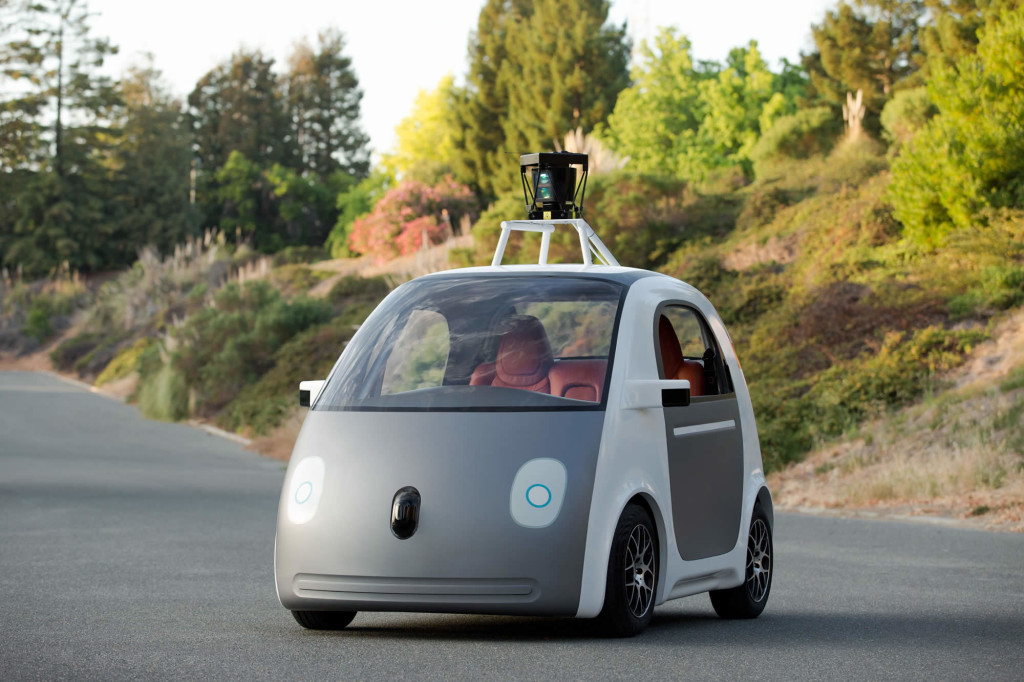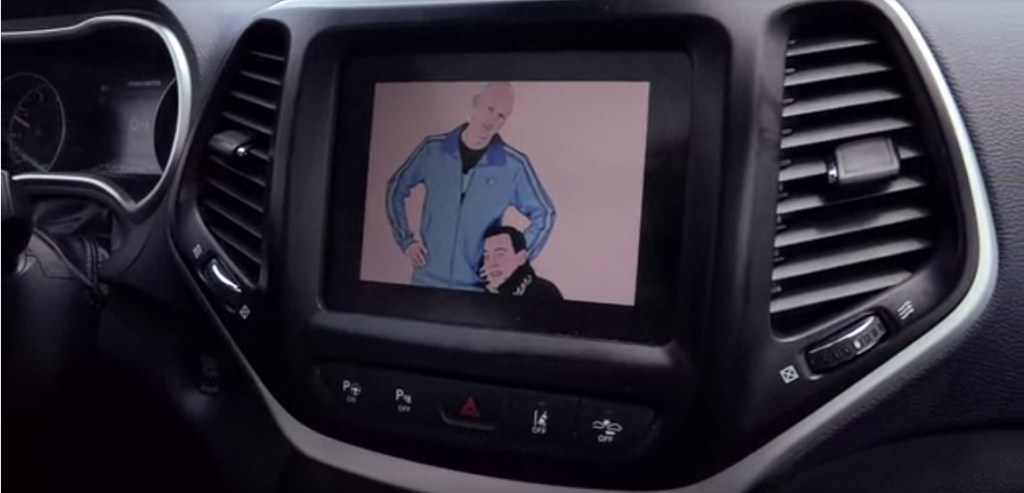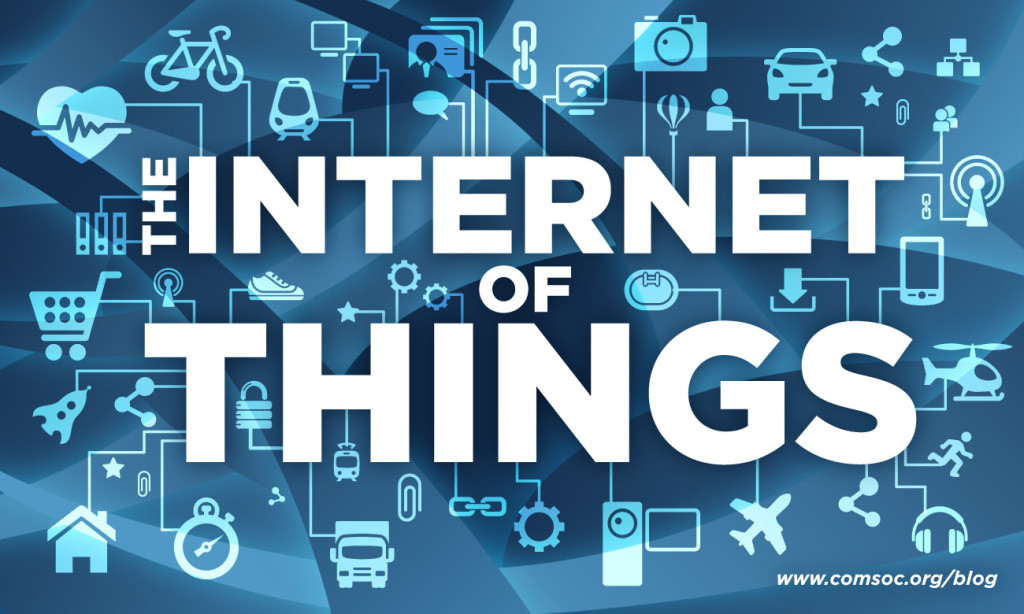Internet of Things
Have you ever thought that it would be cool to access the Internet with other things around you, like say, watches, TVs, or the refrigerator? That’s what the Internet of Things wants to achieve.
What’s the Internet of Things?
Imagine a scenario where you have had a long and tiring day and you can’t wait to get home. Your car then finds the shortest path from your current location to your house, and does all the driving for you. When you get home, your front door opens automatically, and you go in all groggy and dazed. Once you get in your room, you look in the mirror and see your health statistics, along with your reflection.

Imagine this car picking you up after your long day from work or school.
Source: http://www.google.com/selfdrivingcar/where/
I could go on with more examples, but essentially I’ll be describing the same phenomenon: everything you interact with, whether directly or indirectly, will be aware of you, and it will adjust accordingly. This is one example of the many scenarios that give us a peek on what the Internet of Things is.
The Internet of Things is where we connect our reality with the Web. It allows everything and everyone to be connected to the Internet without using the typical smartphone or computer. It’s when your surroundings and the objects around you can interact with other things that may not be even in the same room it’s in.
The Internet Then, and Now
We’ve come a long way from connecting a series of computers to communicate and pass information with one another. The Internet, for a very long time, was just something that people could access when they have computers at home. Before, if you had a computer, it was considered a luxury. Nowadays, it’s what you see at home, at school, and at work. It’s what businesses and services use to work on their products and serve their customers. It’s what you’re using in order to read this article right now.
But you might not even be reading this from a computer or even a laptop. You might be reading this article from your smartphone, or your tablet. Pretty soon, you can get updates of things you follow by using your watch—and we already have smartwatches out in stores. You can even access the Internet on your TV and stream your favorite shows or movies there.

Your tablet just became bigger and heavier.
Source: http://www.samsung.com/us/microsite/2012-smart-tv-bb/
Suddenly, the thought that almost everything we interact with can be connected to the Internet seems not too far from happening.
What’s Cool with the IoT
The Internet of Things (abbreviated as IoT) can give society access to information not only in the comforts of their home, but also anywhere around the world. We already have that connection to the World Wide Web through our handheld devices; what more if we’re not really using our gadgets?
But how, you may ask, can we do exactly that? Do we attach a screen to every single thing that we interact with in our daily lives?
Well, not exactly. This is where sensors come into play.
Sensors are the reason why our phones and tablets can detect the touches we make on the screen. Sensors are what security systems use to warn you if someone is trying to sneak into your house or building. Sensors are also what allow police to determine if you went over the speed limit.
Through the use of sensors, we can get data about how many cars pass by a certain street at a certain time. Sensors can determine whether your heart rate is normal, or if you need to see a doctor immediately. It lets us know if it’s going to rain in a few hours, or if we would be better off wearing light clothing because of the intense heat. Sensors are being used already in lots of devices and systems—we just have to utilize this information and know how to make it work for us, and to make the simple things that we do more efficient.
Along with sensors, we aren’t strangers to cloud-based storages—a lot of people use Dropbox, Google Drive, or any other type of storage service where they can safely store their files on the Internet. The same can be said for social media sites like Facebook, Twitter, or Instagram, where hundreds and thousands of people upload and share information every day.
By using sensors and the information that people share on the Internet, we can build systems that rely on the data gathered to come up with solutions that give us options based on the context where it came from. Think of it like having sensors on the road to determine if the traffic is bad, if there was an accident in the area, or if it’s flooded. But in order to process this information, you would need an optimized and robust system that can manage all the information it’s going to receive.

By 2020, it is estimated that there will be over 25 billion devices connected to the Internet.
Source: http://www.technologyreview.com/news/527356/business-adapts-to-a-new-style-of-computer/
Fog computing, or edge computing, extends the computing capability of the applications that connect to it closer to the network’s edge. It has low cost, and is almost instantaneous, because the information sent doesn’t need to travel a long way. Cisco even estimates that by 2018, around 40% of IoT-created data will be processed by the fog.
Now, we have the technology we need to be able to make the IoT a reality. A lot of businesses and companies are already investing in it, like Microsoft, and Google. But in order for all of us to make the jump into smart cities and smart roads, not only do we need robust systems, we also need them to be secure.
An Underlying Concern with IoT
Dr. John Barrett had a talk at TEDxCIT back in 2012 about The IoT. He talked about all the practical uses with having our real world and online world intertwine. He gave lots of scenarios where these could work, where the IoT would be beneficial for all. Eventually, he pondered about what our situation would be twenty years from now. He mentioned the possibilities of a utopia, or at least some parts of it, a technocracy, and a Panopticon.
The Panopticon is a prison institution designed in the late 18th century by social theorist Jeremy Bantham. He explained that this building will have cells in it, where one person would be kept in. In the middle of this building is a tower wherein the watchman can observe the inmates in their cells. These inmates would be unaware of whether they were being watched or not.
“The Internet of Things is the ultimate global Panopticon,” said Dr. Barrett. “Privacy as a concept under the Internet of Things may become meaningless.” This is one of the main problems seen in IoT: it asks each and every person in society to share and send bits and pieces of information about their lives with everyone else, from where they are to what they do at home. In order for these smart things to work, it needs data from each and every one of us in order for it to give accurate and reliable results.
There’s also the case that the IoT devices and systems that we have right now are not as secure as we’d hope they would. One example is a car-hacking test that network engineers Charlie Miller and Chris Valasek did to WIRED reporter Andy Greenberg while he was driving his Jeep Cherokee on a highway.

A picture of Miller and Valasek appear on the Jeep dashboard that Greenberg is driving while they were hacking the SUV.
Source: http://www.wired.com/2015/07/hackers-remotely-kill-jeep-highway/
Greenberg voluntarily let himself be the test driver of Miller and Valasek’s car-hacking research over the past year. The hackers didn’t let Greenberg know what they were going to do, but told him, “don’t panic,” which he successfully did, while his air-conditioning, radio, and windshield wipers were doing things not under his control. Eventually, his car stopped in the middle of the road, with lots of cars piling up behind it. This was when the experiment stopped.
The above example was just an experiment done by two people researching a potential security concern; what more if this were to actually happen in real life? That’s why, after finding out about the potential risks the Chrysler Jeep Cherokees had, the company FCA US LLC recalled around 1.4 million Chryslers back. Now, more and more people were thinking that maybe the IoT wasn’t all that great.
Lots of Room for Improvement and Innovation
The IoT is still relatively young, and developers for the system are just starting to get the hang of things. These devices can still improve greatly through policies set by lawmakers—like the bill that two US senators introduced that seeks to set security standards for cars sold in their country—and through our cooperation with making these systems safer.
Although the threat cannot be completely removed because that entails a whole different set of societal changing, it can at least be diminished to a manageable extent through security systems and countermeasures done by the companies that develop these devices.
The Internet of Things can change the way our world works. It’s just a matter of knowing what we’re getting into, and being open to the change.
Sources:
TEDx Talks. The Internet of Things: Dr. John Barrett at TEDxCIT: https://youtu.be/QaTIt1C5R-M?t=11 [2 August 2015]
Burrus, Danila. The Internet of Things Is Far Bigger Than Anyone Realizes: http://www.wired.com/2014/11/the-internet-of-things-bigger/ [6 August 2015]
Van Kranenburg, Rob. How to negotiate IoT into a political reality: http://www.theinternetofthings.eu/what-is-the-internet-of-things/ [6 August 2015]
Banafa, Ahmed. IoT: A Fog Cloud Computing Model: https://www.bbvaopenmind.com/en/iot-a-fog-cloud-computing-model/ [6 August 2015]
Longoria, Gina. How The Internet Of Things Will Shape The Datacenter Of The Future: http://www.forbes.com/sites/moorinsights/2015/08/04/how-the-internet-of-things-will-shape-the-datacenter-of-the-future/ [6 August 2015]
Bray, Hiawatha. After car hack, Internet of Things looks riskier: http://www.betaboston.com/news/2015/08/03/after-car-hack-internet-of-things-looks-riskier/ [6 August 2015]


Comments